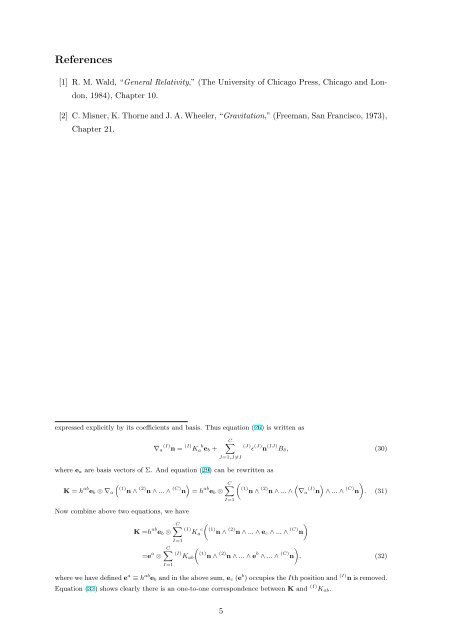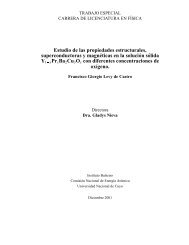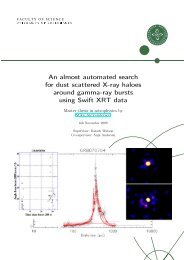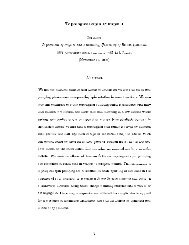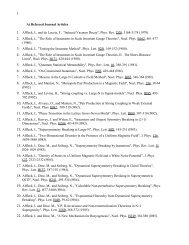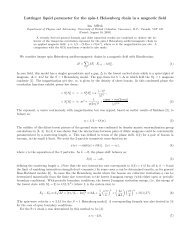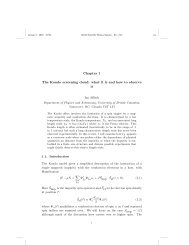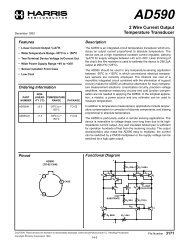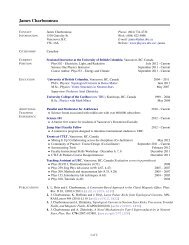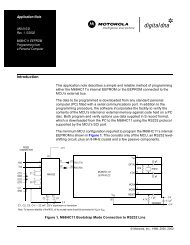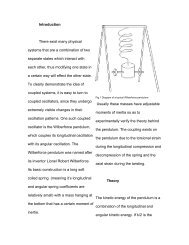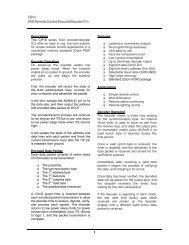Extrinsic Curvature as Geodesics Deviation
Extrinsic Curvature as Geodesics Deviation
Extrinsic Curvature as Geodesics Deviation
You also want an ePaper? Increase the reach of your titles
YUMPU automatically turns print PDFs into web optimized ePapers that Google loves.
References<br />
[1] R. M. Wald, “General Relativity,” (The University of Chicago Press, Chicago and London,<br />
1984), Chapter 10.<br />
[2] C. Misner, K. Thorne and J. A. Wheeler, “Gravitation,” (Freeman, San Francisco, 1973),<br />
Chapter 21.<br />
expressed explicitly by its coefficients and b<strong>as</strong>is. Thus equation (26) is written <strong>as</strong><br />
∇ a (I) n = (I) K b<br />
a e b +<br />
C∑<br />
J=1,J≠I<br />
where e a are b<strong>as</strong>is vectors of Σ. And equation (29) can be rewritten <strong>as</strong><br />
( )<br />
K = h ab e b ⊗ ∇ (1)<br />
a n ∧ (2) n ∧ ... ∧ (C) n = h ab e b ⊗<br />
Now combine above two equations, we have<br />
K =h ab e b ⊗<br />
=e a ⊗<br />
C∑<br />
I=1<br />
C∑<br />
I=1<br />
C∑<br />
I=1<br />
(J) ɛ (J) n (IJ) B δ , (30)<br />
(<br />
( )<br />
)<br />
(1) n ∧ (2) n ∧ ... ∧ ∇ (I) a n ∧ ... ∧ (C) n . (31)<br />
(<br />
)<br />
(I) Ka<br />
c (1) n ∧ (2) n ∧ ... ∧ e c ∧ ... ∧ (C) n<br />
(<br />
)<br />
(I) K (1) ab n ∧ (2) n ∧ ... ∧ e b ∧ ... ∧ (C) n , (32)<br />
where we have defined e a ≡ h ab e b and in the above sum, e c (e b ) occupies the Ith position and (I) n is removed.<br />
Equation (32) shows clearly there is an one-to-one correspondence between K and (I) K ab .<br />
5


